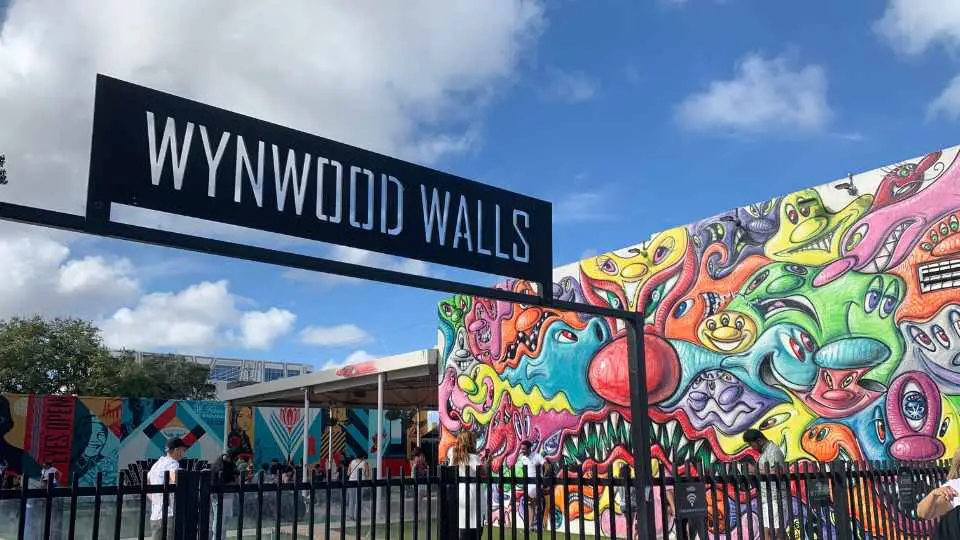Best Communities to Live in Miami: Top Picks for Lifestyle and Location
Miami’s status as a global city is well-cemented, with its array of diverse neighborhoods offering a tapestry of cultural experiences that cater to a variety of lifestyles and preferences. Nestled in the heart of South Florida, the city is known for its vibrant culture, which is a dynamic mixture of international influences and American charm. Residents revel in the subtropical climate, a bustling urban fabric, and picturesque beaches that outline the city’s connection to the Atlantic Ocean. Miami neighborhoods are as varied as the people who inhabit them, ranging from serene, tree-lined suburbs to high-energy, urban districts.
When searching for the best communities within Miami, one must consider the blend of lifestyle, locality, and amenities each area provides. The urban neighborhoods of Brickell and Downtown Miami are noted for their high-rise living, proximity to the financial district, and energized nightlife. In contrast, Coconut Grove offers a more relaxed atmosphere with a historic, small-town feel and lush surroundings, while Coral Gables presents a pedestrian-friendly environment characterized by Mediterranean-style architecture and an array of boutique shops and outdoor cafes.
While these areas shine in their unique ways, they collectively contribute to the appeal of Miami as a place to call home. The city’s ability to seamlessly integrate natural beauty with urban convenience makes it an appealing destination for anyone looking to embrace a rich, multifaceted lifestyle. Whether it’s the oceanfront opulence of Bal Harbour or the verdant suburban tranquility of Pinecrest, Miami’s neighborhoods offer a quality of life that is hard to match.
Top Neighborhoods for Different Lifestyles
Miami offers a plethora of neighborhoods each catering to a different lifestyle, whether for young professionals looking for vibrant urban living or families seeking serene suburban comfort.
South Beach
South Beach is synonymous with bustling nightlife and pristine beaches, making it a choice location for individuals wanting to be at the heart of Miami’s entertainment scene. Art Deco architecture and a lively atmosphere define this iconic neighborhood.
Brickell
Brickell is Miami’s financial district, teeming with modern high-rises and affluent young professionals. The area offers a luxurious urban lifestyle with a rich array of dining and shopping options.
Coconut Grove
Known for its bohemian vibe and lush landscapes, Coconut Grove appeals to those who appreciate a laid-back atmosphere. It’s an ideal residential area with a historic small-town feel just minutes from Downtown Miami.
Coral Gables
Coral Gables, with its Mediterranean Revival architecture, stands as one of Miami’s most charming neighborhoods. It’s well-suited for families and individuals who seek a sophisticated, tranquil environment.
Little Havana
Little Havana offers a vibrant cultural experience with its strong Cuban heritage. This neighborhood is replete with Latin American art galleries, restaurants, and music venues.
Wynwood
Wynwood is the epicenter of Miami’s art scene, featuring an array of graffiti murals and galleries. Perfect for art enthusiasts and those seeking a youthful, creative community.
Edgewater
Edgewater is a residential area with a blend of modern condominiums and historic homes, offering fantastic bay views and proximity to art and culture hubs like the Adrienne Arsht Center.
Bal Harbour
Bal Harbour is an exclusive neighborhood known for luxury shopping and upscale living, with beachfront condos providing an opulent residential experience.
Key Biscayne
Key Biscayne is an island paradise offering family-friendly residential areas with access to natural parks, beaches, and recreational activities, ideal for those looking to raise a family in a serene setting.
Pinecrest
Pinecrest is lauded for its top-rated schools and spacious lot sizes, making it one of Miami’s best places to raise a family. It’s characterized by tree-lined streets and a quiet suburban atmosphere.

Real Estate Insights
In Miami, the real estate market presents varied options catering to both residential and commercial buyers. Whether one seeks to invest in property for personal use or for business purposes, understanding the differences between buying and renting, and knowing the landscape of commercial spaces, are critical pieces of the puzzle.
Buying vs. Renting
When individuals are considering joining the Miami community, they often weigh the benefits of buying versus renting. Miami’s real estate market has seen an influx of new residents, contributing to a competitive marketplace, especially in urban neighborhoods and affluent areas such as Brickell, Downtown Miami, and Coconut Grove.
- Buying:
- Pros:
- Long-term investment leading to potential equity growth.
- Stability in housing costs with fixed-rate mortgages.
- Cons:
- Higher initial costs including down payment and closing costs.
- Additional expenses like property taxes and homeowner’s insurance.
- Pros:
- Renting:
- Pros:
- Flexibility to move without the commitment of owning.
- Fewer responsibilities for maintenance and repairs.
- Cons:
- Variable rent costs with potential for annual increase.
- No equity built over time, less long-term financial benefit.
- Pros:
Buyers benefit from a sense of permanence and tangible investment, while renters may prefer the lower initial outlay and lack of maintenance responsibilities.
Commercial Spaces
In the realm of commercial real estate, Miami’s market is dynamic, reflecting the city’s growth as a business hub. The commercial spaces vary by neighborhood, with urban areas offering high-rise offices and retail locations.
- Downtown Miami is a focal point for commercial activity, characterized by:
- High-density offices and mixed-use buildings.
- Proximity to major entertainment and cultural venues, enhancing business exposure.
- Urban Neighborhoods:
- Offer mixed-use developments combining residential and commercial units.
- Trend towards co-working spaces, appealing to smaller ventures and startups.
Miami’s commercial sector caters to a diverse population, and the presence of affluent residential areas nearby supports a robust economy. Investors keen on commercial spaces will find a market that is responsive to both corporate tenants and independent businesses, each looking for their ideal locale within the vibrant cityscape of Miami.

Leisure and Recreation
Miami’s communities provide a wealth of leisure and recreation opportunities, embracing outdoor activities. From lush parks to comprehensive sports facilities, residents can enjoy an active and fulfilling lifestyle in Miami’s agreeable weather.
Parks and Nature Preserves
Miami boasts numerous parks and nature preserves that offer serene landscapes and outdoor recreational opportunities for walking, picnicking, and wildlife observation. Bill Baggs Cape Florida State Park, located in Key Biscayne, presents breathtaking views and rich history, with its iconic lighthouse and extensive hiking paths.
- Matheson Hammock Park, in Coral Gables, is distinguished by its man-made atoll pool and scenic drive, affording residents a tranquil escape.
- Tropical Park is another popular destination, widely used for its jogging tracks, multiple sports courts, and regular cultural events.
Sports and Fitness Centers
Fitness enthusiasts have access to a variety of sports and fitness centers, featuring state-of-the-art equipment and diverse workout options. The Miami Shores Country Club offers a historic golf course, while the Crandon Golf at Key Biscayne is known for its picturesque links-style course.
- Community centers typically house basketball and tennis courts, providing spaces for both casual play and competitive matches.
- Fitness centers and gyms are scattered throughout Miami, some focusing on specialized training regimes and high-intensity workouts.
Shopping centers near these hubs often carry sporting goods and athletic wear, ensuring that residents have easy access to gear and apparel for their recreational needs.

Dining, Shopping, and Entertainment
Miami’s neighborhoods offer a vibrant array of dining options, upscale shopping centers, and a thriving arts scene. Residents and visitors alike can indulge in an eclectic mix of cuisines, explore renowned malls with an array of retailers, and immerse themselves in a rich cultural tapestry of music and art.
Cuisines and Restaurants
Miami’s culinary landscape is as diverse as its population, featuring a range of flavors from traditional Cuban fare in Little Havana to fresh seafood dishes in Coconut Grove. Bal Harbour is known for its high-end dining experiences, while the Brickell area boasts trendy eateries with global cuisine. Key Biscayne offers a mixture of casual and upscale restaurants, many with beautiful ocean views.
Shopping Centers
Shopping enthusiasts are spoiled for choice with destinations like Brickell City Centre and the vibrant streets of Downtown Miami and Wynwood. These areas feature a mix of local boutiques and international brands. Bal Harbour Shops provide a luxury shopping experience with an ensemble of designer stores. Pinecrest caters to those looking for a more laid-back shopping atmosphere with its charming outdoor malls and independent shops.
Arts and Music
The arts are in full bloom in neighborhoods like Wynwood, known for its iconic street art like Wynwood Walls and contemporary art galleries. Edgewater offers a blend of music venues and casual bars for a lively night out. The Adrienne Arsht Center in Downtown Miami is a hub for performing arts, presenting a broad spectrum of music and theater performances. Coconut Grove’s laid-back cafes often host live music, offering a more intimate entertainment experience.

Transportation and Accessibility
Miami’s neighborhoods offer a variety of transportation options geared towards both convenience and connectivity. Residents can rely on a functioning public transportation system and dedicated pathways for pedestrians and cyclists, ensuring easy travel for work or pleasure.
Public Transit Options
Miami’s public transportation is an amalgamation of modes that includes buses, trolleys, the Metrorail, and the Metromover. Specifically,
- Buses: Extensive routes covering the majority of Miami neighborhoods.
- Trolleys: Free service with routes in popular areas such as Brickell.
- Metrorail: An elevated rail system connecting to key points like Downtown Miami.
- Metromover: A free automated people mover system, especially prominent in the Brickell and Downtown areas, connecting to major destinations including Brickell City Centre.
Walkability and Bike Paths
- Brickell: Characterized by high walkability, Brickell allows pedestrians to easily navigate to work, shops, restaurants, and the Brickell City Centre.
- Bike Paths: Many neighborhoods are fitted with designated bike paths, encouraging residents to enjoy the outdoors and providing a sustainable transport option.

Average Costs and Living Expenses
In Miami, the cost of living can vary greatly depending on the neighborhood and lifestyle choices. It is important for potential residents to consider both real estate prices and recreational expenditures when budgeting for life in this vibrant city.
Housing Affordability
Miami’s real estate market is dynamic, with housing affordability fluctuating based on location and the type of dwelling. On average, renting a two-bedroom unit in Miami costs more than $2,000 per month, which is significantly higher than the national and state averages. When looking to purchase property, buyers can expect a competitive market where prices are influenced by the population and demand.
- Median Home Price: Buyers should be aware that the median home price in Miami often exceeds the national average.
- Rental Market: Renters need to budget carefully, as rental costs can consume a substantial portion of their income.
Budgeting for Leisure Activities
In addition to housing, residents should plan their budgets to accommodate leisure activities. Miami offers a myriad of entertainment options that can affect one’s monthly expenses.
- Entertainment Costs: From dining out to attending events, the city’s vibrant lifestyle means entertainment can be a considerable monthly expense.
- Recreation and Utilities: Potential residents should include utility costs and expenses related to recreational activities, such as gym memberships and outings to Miami’s beaches and parks, in their budget planning.

Are you interested in owning a home in Florida?
If the allure of sun-kissed beaches, vibrant communities, and year-round warmth speaks to your heart, owning a home in Florida might just be your next great adventure!
To help our audience with buying or selling a home in Florida, Endless Summer has affiliated with Quantum Realty Advisors, Inc. (“Quantum”) which is a licensed Florida real estate company that has been in business since 1998. Quantum’s experienced real estate advisors will take the time to discuss exactly what your are looking for in a home as well your what will fit into you budget.
When you are ready to begin, they will be with you every step of the way. Click here to contact the team at Quantum.






